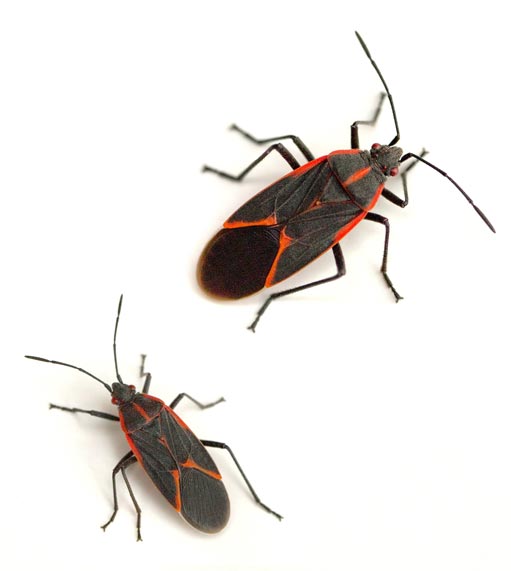Beaverton Pest Control
BOXELDER AND STINK BUGS
Boxelder bugs get their common name from the fact that they are often found on or around boxelder trees, which are found throughout the boxelder bugs’ original native range. Boxelder trees are not native to the Western states, but can be found throughout the Eastern United States and as far West as Eastern Nevada, as well as throughout Eastern Canada. Boxelder bugs have been well established throughout the West coast for many years where they have adapted to not having boxelder trees and live on various species of broadleaf and coniferous tree species native to this region. Boxelder bugs are primarily a nuisance pest as they enter structures, including homes, sheds and garages to overwinter.
The brown marmorated stink bug (BMSB) is considered an invasive species, or a pest of foreign origin, as it was introduced to the United States from Eastern Asia in the mid-1990s.
The stink bug earned its name from its tendency to release an odor when disturbed or when crushed.
Treatment for both of these bugs involves the application of a micro encapsulated insecticide to the infested areas. The best time of year to treat is in late Summer or early Fall as they are attempting to move in. We achieve the best results on sunny afternoons when these bugs are out and exposed, sunning themselves.
Boxelder Bugs
Boxelder bugs are black with reddish or orange markings on their back. Boxelder bugs also have a body shape that is a somewhat-flattened and elongated oval and is about half an inch long. They have two antennae and six legs that are typically half of their body length.
Homeowners often first detect Boxelder bugs by their sometimes massive invasions in late Summer or early Fall, noticing them turn up on the most exposed sides of a structure, which catch the most afternoon sun and where they can most easily warm themselves. Finding large numbers of live or dead boxelder bugs is a telltale sign of an infestation.


Stink Bugs
Stink bugs, characterized as both “large, oval-shaped insects” and “shield-shaped insects. ”Adult stink bugs can reach almost 2 cm in length. They are almost as wide as they are long. With their legs extending from the sides, this makes the adult bugs appear even larger. It has darker bands on the wings and lighter bands on the antennae.
Homeowners often first detect stink bugs by their sometimes massive invasions in late Summer or early Fall, noticing them turn up on the most exposed sides of a structure, which catch the most afternoon sun and where they can most easily warm themselves. Finding large numbers of live or dead stink bugs is a telltale sign of an infestation.
